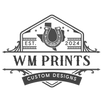3D printing can be an incredibly rewarding process, but it’s not without its challenges. Whether you're a hobbyist or a professional, encountering errors during the print process is common. Troubleshooting these issues is an essential part of achieving high-quality prints. Here’s a comprehensive guide to the most common 3D printing errors and how you can address them.
Common 3D Printing Errors
1. Warping
Warping occurs when the corners of a print start to curl up, leading to a distorted final product. This is usually caused by uneven cooling of the material.
Solutions:
- Use a heated bed to keep the model evenly warm during printing.
- Apply adhesives like glue stick or painter’s tape to help the print stick to the bed.
- Consider an enclosed print space to minimize temperature fluctuations.
2. Layer Shifting
Layer shifting can result in misaligned layers, causing your print to turn out incorrectly. This can be due to mechanical issues or interruptions during printing.
Solutions:
- Check the belts and pulleys for any looseness and tighten them if necessary.
- Make sure the printer is on a stable surface to prevent movement during printing.
- Review the file for any inconsistencies that might cause interruptions.
3. Stringing
Stringing or oozing occurs when strands of filament appear between parts of a print, resembling cobwebs.
Solutions:
- Adjust the retraction settings in your slicer software to reduce filament leakage.
- Lower the print temperature so the filament doesn't flow too freely.
- Use a nozzle cleaning tool to ensure there is no blockage.
4. Poor Adhesion
Poor adhesion between the print bed and the first layer can lead to prints that do not stick and ultimately fail.
Solutions:
- Level the print bed carefully to ensure an even surface.
- Clean the print bed regularly to remove any residue that might affect adhesion.
- Use a brim or raft to increase surface area for better sticking.
Recommended Tools for Troubleshooting
Having the right tools on hand can make troubleshooting and maintaining your 3D printer much easier. For instance, the Lyman Type Prep Tools Holder can help keep your tools organized and readily accessible. This product is excellent for ensuring you have everything you need within reach as you work on optimizing your printing process.
Conclusion
3D printing is as much about the journey as it is about the final product. While these common errors can be frustrating, they are also opportunities to learn and improve your techniques. With the right approach and tools, many of these issues can be resolved, leading to better quality prints.
For those looking to enhance their 3D printing experience with top-notch accessories, visit wmprints.com. Equip yourself with the right tools and knowledge to elevate your 3D printing projects.
Happy Printing!





